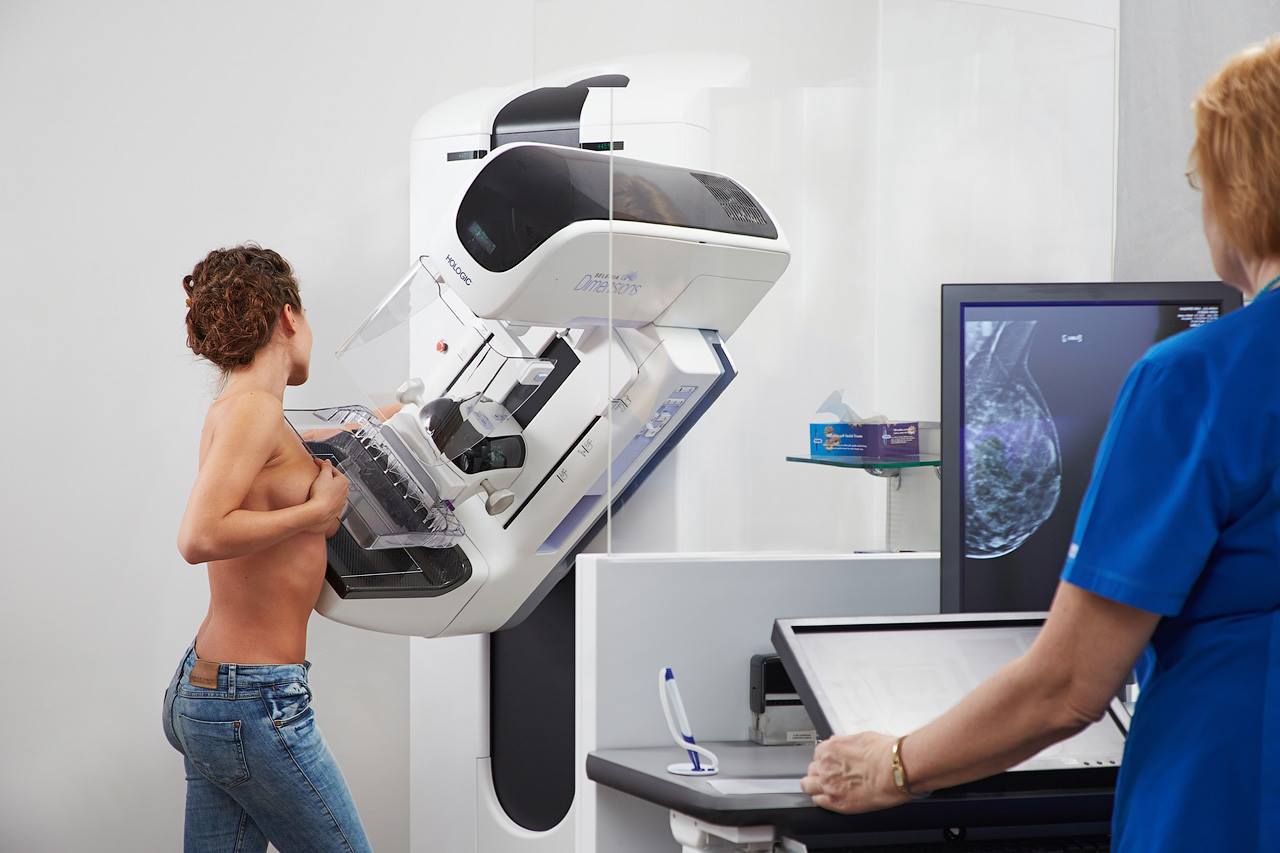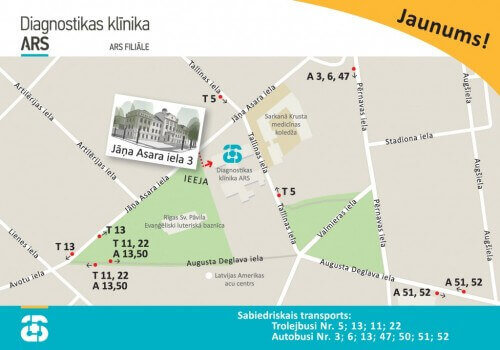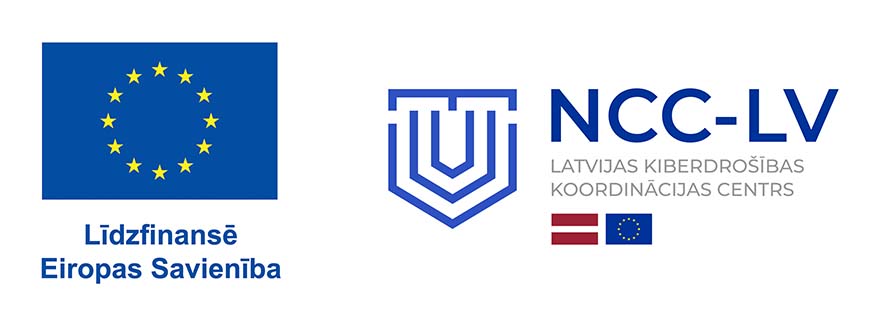Mammographies are breast examinations using low intensity X-rays. They are considered one of the most effective methods for the early detection of breast cancer or other breast problems.
Mammographies with tomosynthesis are the most effective achievement in the development of mammography methodology in the last 30-40 years. Tomosynthesis provides specific diagnostic advantages in mammography for women with dense breast structures and opens up opportunities for early diagnosis, which cannot be done with traditional mammography. Mammographies with tomosynthesis technology are an irreplaceable and unique breast examination method. There are types of breast cancer with microcalcifications (small calcium deposits in breast tissue) which can only be viewed using mammography. These calcifications may indicate initial changes in the glandular tissue – such as malignant tumours, which are just begging to develop. Microcalcifications (signs of impalpable breast cancer) are small and positioned in small zones, which unfortunately cannot be detected with ultrasonography examination.
IMPORTANT INFORMATION!!!
- It is suggested that mammography exams are performed between days 5-12 of a patient’s menstrual cycle!
- Examinations cannot be performed during pregnancy!
- Patients with breast implants need a referral from a doctor and a breast implant certificate!
A first-time mammography exam is recommended by the age of 40, however, after the age of 50 it should be performed at least once a year depending on the results from the previous mammography! Results from every mammography should be kept!
Hologic Selenia Dimensions, mammography equipment supported by unique tomosynthesis technology, allows the following exams to be performed:
- Mammography – A 2D breast exam, that allows the examination of breasts in various positions. The resulting images are digitally processed and archived for comparison with results from future mammography examinations.
- Mammography with tomosynthesis – an in-depth breast exam with a combination method (also referred to as combo-exam), that integrates 3D and 2D examinations. During the visit two examinations are performed – a digital mammography (2D) and an in-depth exam, which is a mammography with tomosynthesis (3D). The combined mammography method with tomosynthesis is significantly more accurate. It allows for the earlier discovery of suspicious changes and possible pathologies in breasts.
Tomosynthesis advantages compared to standard mammography:
- It is possible to carry out both in-depth 3D and 2D exams during only one visit.
- Increased capability of early breast tumour diagnostics that could not be detected with a standard 2D mammography due to pronounced breast density.
- Up to 40% increase in invasive breast cancer diagnostics.
- Up to 27% increase in initial diagnostics of all types of breast tumours.
- A decrease of 15% in erroneous or so-called false positive exams where the impression of the existence of tumour is caused by breast tissue appearing differently.
- A 3D exam reduces the need for a repeated mammography examinations.
- Improved comfort and a significantly reduced X-ray exposure dose during the examination. The examination of one projection lasts only 4-5 seconds.
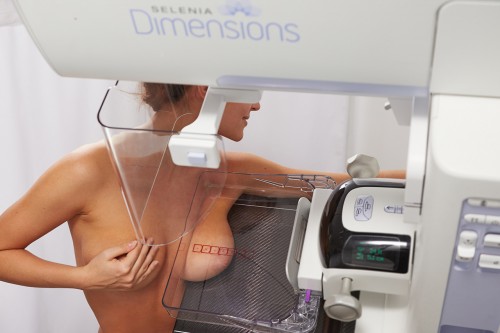 |
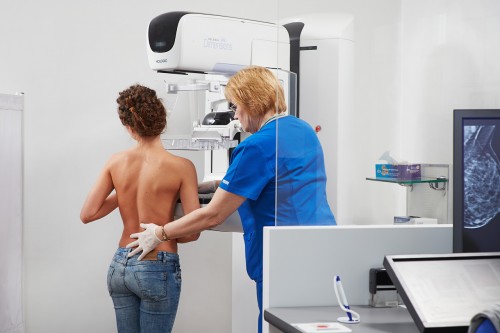 |
How often should a mammography with tomosynthesis be performed?
- For women over 35 years of age, if there is a family history of hereditary breast cancer (if there are many first or second degree blood relatives with a history of endocrine tumour diagnosed at an early age (i.e., below the age of 40-50)), a mammography should be performed once a year!
- Women over 40 years of age should attend a mammography exam once every 2 years!
Useful information:
- Women under 40 years of age and patients with insurance policies need a referral from their physician for mammography exam.
- Women over 40 years of age, without insurance policies, do not need a referral from their physician.
Post-exam
Resulting mammography exam images are analysed by a radiologist, who issues a detailed report and conclusion. Reports can be obtained within a week, in urgent cases – immediately afterwards.
For your information:
- Diagnostic mammography results are evaluated by one radiologist.
- State funded screening mammography results are verified by two radiologists.
- Prior registration is required for the mammography exam!
Examination prices:
- With a referral from an attending physician – see Pricelist
- Examinations are covered under insurance policies (depends on the insurance policy type).
Mammography with tomosynthesis is performed by:
| Medical clinic “Medicīnas centrs ARS” 5 Skolas str., Rīga Ph.: (+371) 67 201 016 |
ARS Diagnostic clinic 3 Jāņa Asara str., Rīga Ph.: (+371) 66 929 750 |
The mammography results are evaluated by doctors-radiologists:

